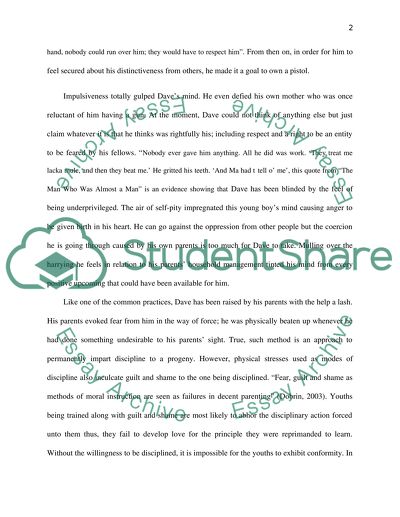Cite this document
(“Short fiction analysis of The Man Who Was Almost A Man Essay”, n.d.)
Retrieved from https://studentshare.org/literature/1418614-short-fiction-analysis-of-the-man-who-was-almost-a-man
Retrieved from https://studentshare.org/literature/1418614-short-fiction-analysis-of-the-man-who-was-almost-a-man
(Short Fiction Analysis of The Man Who Was Almost A Man Essay)
https://studentshare.org/literature/1418614-short-fiction-analysis-of-the-man-who-was-almost-a-man.
https://studentshare.org/literature/1418614-short-fiction-analysis-of-the-man-who-was-almost-a-man.
“Short Fiction Analysis of The Man Who Was Almost A Man Essay”, n.d. https://studentshare.org/literature/1418614-short-fiction-analysis-of-the-man-who-was-almost-a-man.


